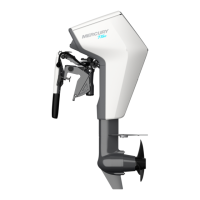Wave and Wake Jumping
Operating recreational boats over waves and wake is a natural part of boating.
However, when this activity is done with sufficient speed to force the boat hull
partially or completely out of the water, certain hazards arise, particularly when
the boat enters the water.
The primary concern is the boat changing direction while in the midst of the
jump. In such case, the landing may cause the boat to veer violently in a new
direction. Such a sharp change in direction can cause occupants to be thrown
out of their seats, or out of the boat.
!
WARNING
Wave or wake jumping can cause serious injury or death from occupants
being thrown within or out of the boat. Avoid wave or wake jumping whenever
possible.
There is another less common hazardous result from allowing the boat to
launch off a wave or wake. If the bow of the boat pitches down far enough,
upon water contact it may penetrate under the water surface and submarine for
an instant. This will bring the boat to a nearly instantaneous stop and can send
the occupants flying forward. The boat may also steer sharply to one side.
Impact with Underwater Hazards
The outboard is designed to absorb impacts with underwater objects at low
speeds with no permanent damage to components. At higher speeds, the force
of the impact may exceed the system’s ability to absorb the energy of the
impact and cause serious product damage.
No impact protection exists while in reverse. Use extreme caution when
operating in reverse to avoid striking underwater objects.
GENERAL INFORMATION
eng 7

